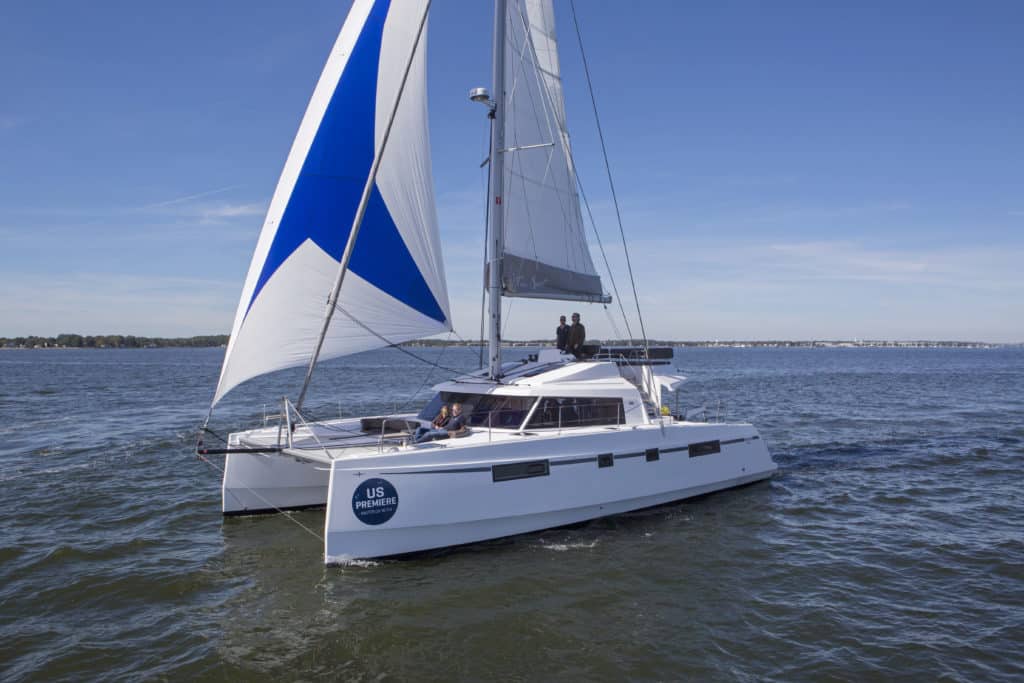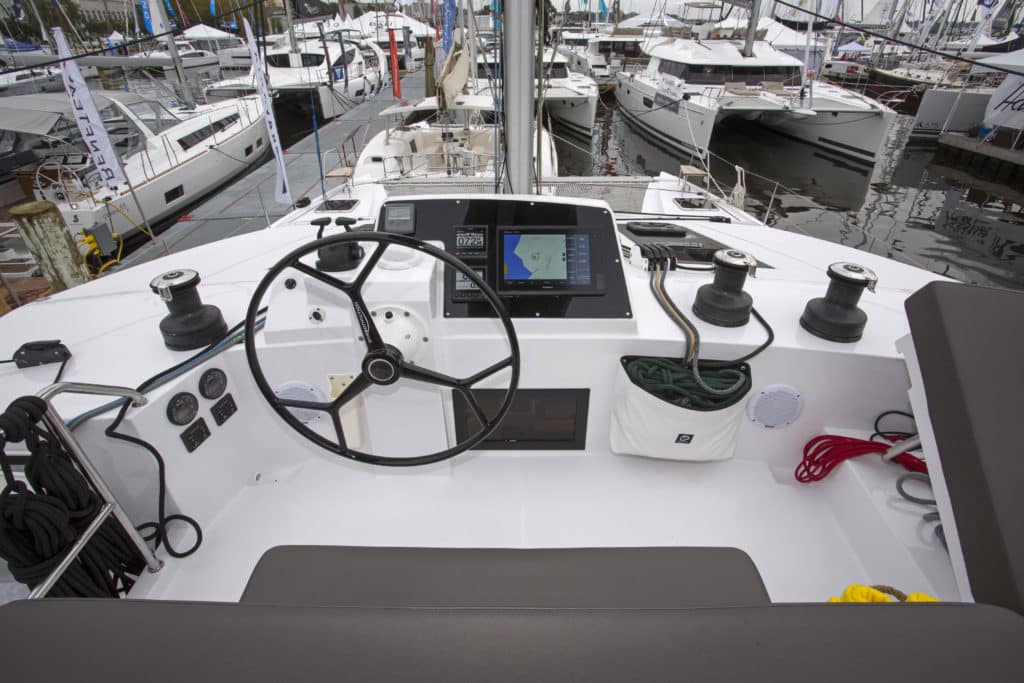
Several years ago, in a bid to expand both its product line and its participation in the charter field, the German builder Bavaria, known well for its monohulls, took the bold step of acquiring the French builder Nautitech, whose specialty was catamarans. To date, the collaboration has produced a trio of cats: a 40-footer, a 54-footer and its latest offering, the Bavaria Nautitech 46 Fly, the last word signifying “flybridge” (the company also builds a model with conventional steering in the cockpit, the Nautitech 46 Open). It’s a boat that’s capable of stirring your imagination toward thoughts of distant shores.
Not surprisingly, the centerpiece of the design is that flybridge, a feature that’s becoming ever more popular on cruising cats. Frankly, on some boats it can look clunky or odd. But on this 46-footer, designer Marc Lombard has performed a magic trick of sorts; the flybridge is incorporated into the prominent coachroof, the forward part of which has an eyebrow over the generous saloon windows while the aft section provides seating topside and a hardtop bimini over the wide-open cockpit, offering ample shade and covering. It all makes for a streamlined appearance. So, visually, the only thing that looks somewhat out of place is the gooseneck for the mainsail boom, which is well above the waterline. That’s a trade-off the builder was willing to make in exchange for a commanding helm station that has plenty of lounging space as well.
The flybridge is accessed through a five-step staircase. The wheel is offset slightly to port. The helmsman’s seat has a movable backrest that can be flipped one way or the other when underway or at anchor. There’s another raised backrest on a U-shaped settee bordering the flybridge that can be lifted like a chaise lounge. All in all, there must be comfortable seating for upward of 20 people. It’s remarkable.
Most lines are led to the helm station, with a suite of Lewmar winches and accompanying Spinlock clutches. Unusually, the genoa sheets are not led to the wheel but to a set of primary winches on either side of the cockpit, which would make singlehanding difficult. A small hard dodger for sun protection for the driver is also available.
Down below, when open, a big sliding door marries the saloon with the cockpit, which can be completely enclosed with a series of clear, drop-down plastic screens or windows. LED lights built into the overhead bimini are a nice touch. There’s a fine L-shaped settee to port, another long settee to starboard and a third at the aft end of the cockpit. Engine access, under molded steps in each hull, is excellent.

In the saloon itself, to port, there’s a standing navigation station that doubles as the furniture covering the refrigerator and freezer. The U-shaped galley is forward and also to port, with plenty of counter space and a pair of sinks. A well-executed L-shaped settee and dining area are to starboard. Plenty of natural light pours in through the wraparound coachroof windows. We tested one of the charter versions of the boat, which meant four staterooms down below, with a pair in each hull, and en suite heads for each. (A private-ownership version features a large owners stateroom that encapsulates the entire port hull.) In the charter model, the cabins share a big common shower stall that’s situated between them (though there are also showers in the heads). Once again, with LED lights built into the overhead, there’s a warm feeling of light and spaciousness below.
Back on deck, the forward trampolines have cushion inserts for yet another place to lie in the sun. There are double headsails with a fixed sprit for a code zero sail or an asymmetric kite, and a traditional genoa on its own furler. The boat we sailed also included a Cummins generator, full air conditioning throughout and electric winches.
The Boat of the Year judges found lots to like about the 46 Fly. “I was impressed by the joinery, the lovely teak grates and the nicely done interior,” said Carol Hasse. “I liked what they had done to appeal to the U.S. market, with the larger AC units and a lot of the systems they put in,” added Ed Sherman.
Unfortunately, we were skunked for breeze on Chesapeake Bay on the day of our scheduled test sail, though the boat did perform well under power, topping 9 knots at 2,600 rpm. We were left with the impression that the hulls of the boat were slippery and she’d sail well too. With such spacious accommodations and smart accoutrements, for anyone in the market for a versatile cat, here’s one well worth a look.
– – –
Herb McCormick is CW’s executive editor.








